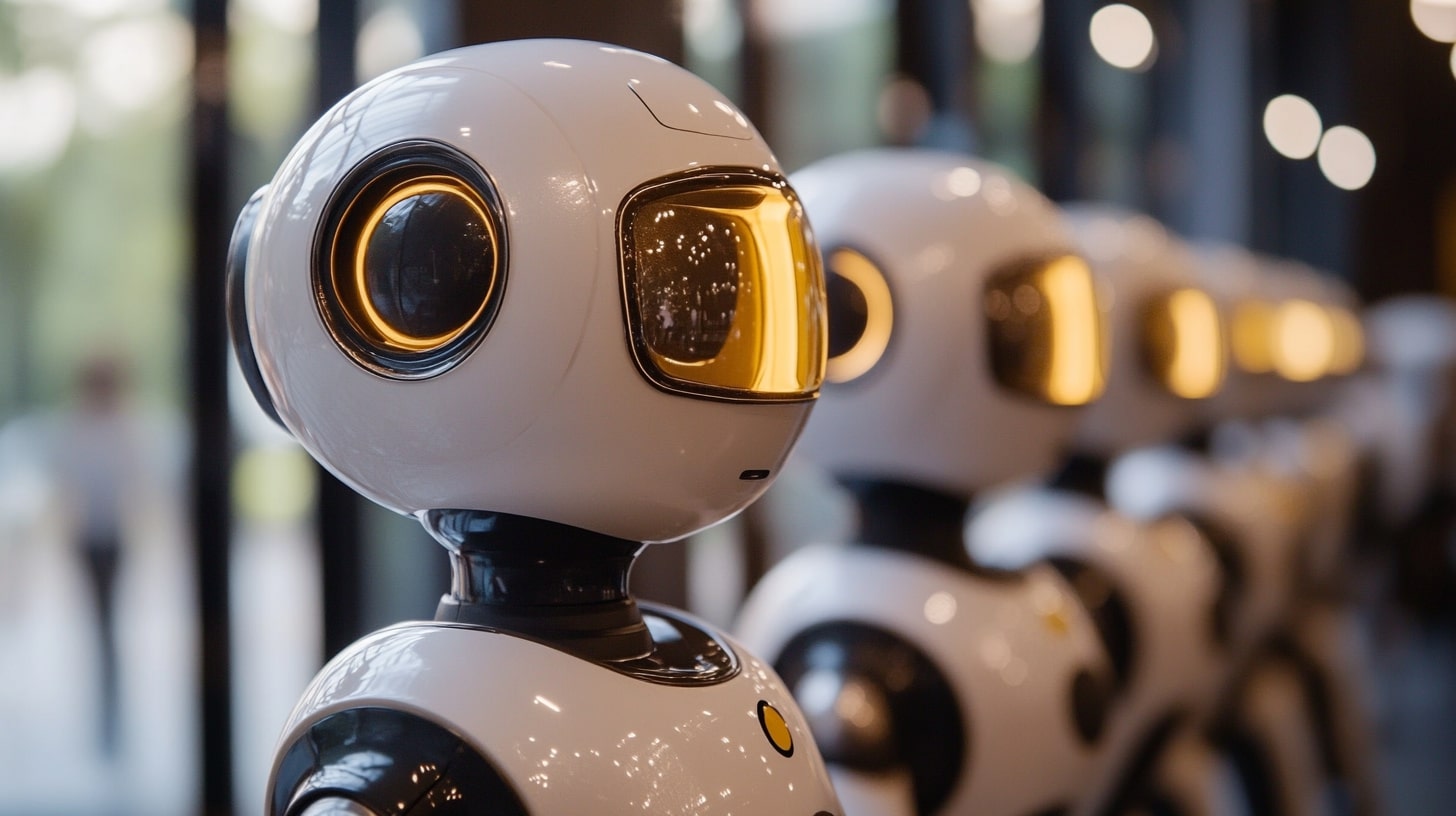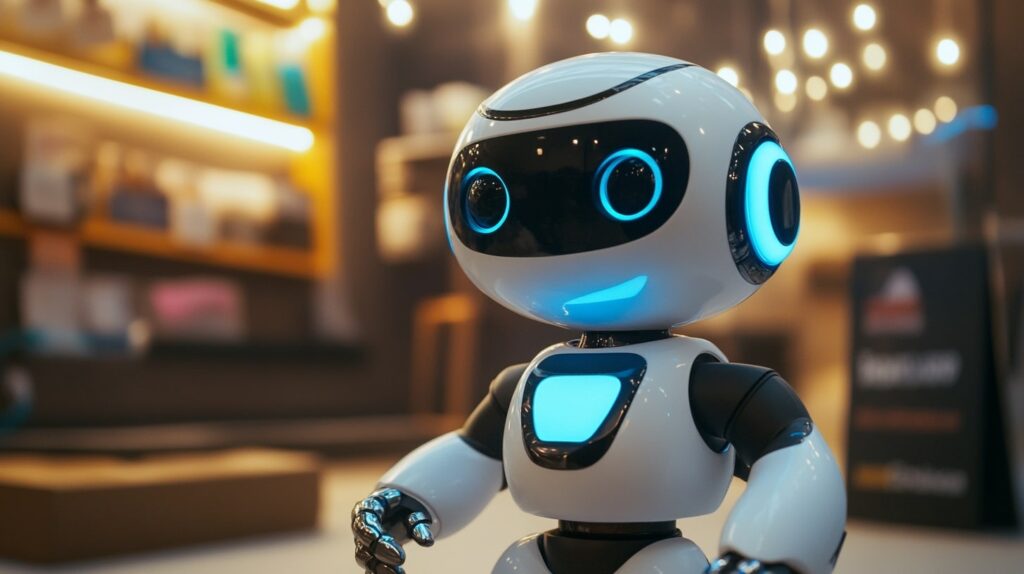Customer Experience Automation: The Future of Seamless, Smart Engagement

Today's rapidly evolving business landscape requires continuous innovation. Organizations across industries are implementing new technologies to streamline operations and enhance productivity. Effective tools help businesses achieve their objectives, particularly when focused on optimizing customer interactions and workflow efficiency. So the important question remains, "What is customer experience automation?" Effective automation enables high-quality customer interactions.
The communication process spans from initial contact through problem resolution. The transition to customer experience automation (CXA) allows you to anticipate needs. Companies can quickly solve problems and deliver superior customer service. This approach improves business operations and supports company growth. Integration with modern systems helps improve the experience. Companies are achieving great success by combining human resources and automation. This powerful combination helps solve complex problems while automating routine tasks in minutes.
Why Automation Is Critical to Modern Customer Experience
Transformation and new technologies have changed the approach to customer service. Customers demand fast, personalized, and omnichannel support. Implementing automated customer experience solutions helps companies scale efficiently while developing effective service strategies. Companies strive to optimize their communication and customer interactions. Regardless of the way customers contact them, they expect a fast and effective response. Online chats, social networks, and email are the most common communication channels customers expect businesses to utilize.
- Instead of long waiting times and the possibility of errors, companies are changing their approach. Companies provide automation for many routine tasks and a fast response. CX automation replaces manual processes with automated systems. This transition enhances the overall user experience. And companies use intelligent tools to connect different systems. They optimize existing systems and improve personalized interaction.
- Automation elevates customer communication to a higher standard. Customers receive 24/7 support and instant feedback. This transformation relies on AI-powered chatbots and intelligent automation. Automated systems are the best way to maintain a good experience. Customers receive instant help and personalized suggestions based on their past interactions. They receive targeted notifications and relevant recommendations based on their past experiences.
- One of the most significant benefits of automation is ensuring consistency. Organizations align their resources to deliver high-quality customer support. They design their services based on customer preferences and quality interactions. The right approach helps to increase the company's efficiency and customer satisfaction. Companies implement targeted strategies that meet customer expectations. The most significant benefits are increased trust and the ability to build new relationships with customers.
The Limitations of Traditional CX Approaches
Automated customer experience is the best way to save time and provide personalized support. Customers expect companies to provide personalized service and respond effectively to their needs. They value maintaining connections with companies that provide quality service. While traditional customer experience approaches have some advantages, they often fall short in today's fast-paced digital environment.
Customer service systems evolve over time, establishing new standards and expectations. Every year, customer expectations grow and continue to rise. Relying on manual processes can cause significant problems for businesses and companies. Customer dissatisfaction and frustration continue to rise when companies rely on outdated methods. Here are the key limitations of traditional approaches:
- Delayed response time. Intelligent automated solutions consistently outperform traditional customer service approaches. The workforce can have significant errors, especially in response time. Human teams process a certain number of tasks in a specific time. Often, customers can expect and receive a negative experience from the interaction. Slow service negatively impacts customer experience and increases frustration.
- Inconsistent responses. Inconsistent responses and poorly handled inquiries disrupt the customer experience. Human agents can process data but may struggle to maintain consistent, effective interactions. Customer experience becomes less successful, which harms trust and the scaling of the company.
- Poor personalization. One of the significant drawbacks of the traditional approach is poor personalization. Human agents struggle to consistently personalize each interaction based on individual customer needs. They may not track preferences on past interactions and behavior. An automated customer experience is the best way to achieve good personalization.
- Lack of scalability. One of the most significant problems is the lack of scalability under the influence of human power. Growing companies must handle increased workloads and larger customer bases. A person cannot physically handle many tasks at the same time. A large number of agents can be a good solution, but for a specific time. Automation is necessary to manage large volumes of data.
How Customer Experience Automation Solves These Challenges
Customer service operations face various challenges that automation can effectively address. Automation resolves these challenges by improving accuracy, response times, and service quality. Automation is based on the use of artificial intelligence chatbots and omnichannel orchestration. Here is how customer experience automation solves the main problems:
- Accuracy. Systems based on artificial intelligence learn customer behavior and their preferences. A holistic approach focuses on consistent and error-free responses. Systems consider customer preferences and operate with high precision. Automated processes are the best for reducing manual input and minimizing errors. Data reconciliation occurs across multiple platforms to improve communication.
- Speed of response. One of the most significant advantages of automation is the use of chatbots. Chatbots work 24/7 and provide continuous customer support. They are based on customer priorities and routing. They pick up context and quickly solve customer problems. With the use of chatbots, CX automation is significantly enhanced. Automation strengthens a close connection with customers and focuses on trust. This real-time process enhances customer engagement.
- Customer satisfaction. Omnichannel orchestration provides customers with a seamless experience. This experience spans multiple platforms, including social networks, chat, and email. The systems identify and prioritize each customer's individual preferences. Personalized approaches and responses lead to higher customer satisfaction. Automation helps analyze customer sentiment and provides constructive responses. Improved customer experience and a guarantee of preserving the company's brand.
Key Technologies Powering Customer Experience Automation

Several key technologies power automation solutions that create seamless customer experiences. These technologies have a significant impact on personalized customer experiences. Experience automation relies on these advanced technologies. Key technologies include:
- Robotic Process Automation (RPA). RPA customer experience focuses on automating repetitive tasks. Companies set up special rules and accounts. RPA integrates with special CRM systems for high-quality data processing. This process reduces human errors and accelerates workflow.
- Artificial Intelligence (AI). Companies use artificial intelligence for predictive analytics. AI systems continuously update and make real-time decisions. Models can learn from experience and past interactions with customers. These capabilities allow companies to predict customer needs and align with their current goals.
- Natural Language Processing (NLP). Natural language processing enables effective customer communications. Systems, especially chatbots, use language that is understandable to customers. Systems understand and respond to people's natural language and provide support. The process is ideal for scaling a company and connecting with customers.
- Automation platforms. Customer experience automation is key to scaling operations and maintaining brand integrity. Platforms unify all ways of communication in a way that is convenient for customers. They manage processes at work and provide clarity for customers. These platforms consolidate communication channels to better serve customer preferences.
- Management systems. Automation provides robust management systems that enhance security and enable continuous monitoring across business operations. Companies can monitor performance and investigate any errors. Management systems enable companies to maintain appropriate customer interactions.
Robotic Process Automation (RPA) in CX
RPA in customer experience has significant advantages. The technology is designed for high-quality interaction with customers. Robotic process automation streamlines task processing. Repetitive actions and routine tasks are performed in a matter of seconds. This support accelerates business operations and improves efficiency. Communication and interaction with customers reach a new, more productive level. Here is the impact of RPA on customer interaction:
- Data entry. Data entry is routine work that traditionally suffers from human errors. Bots extract customer data from various servers and convert it into CRM systems. Data entry takes a matter of seconds while minimizing any risks. Another advantage is reduced processing time and a customized interaction process.
- Request routing. After checking the system, requests are sent to the appropriate departments. The process is focused on prioritizing requests and analyzing the content. The process is characterized by minimizing errors and reducing responsibilities for people. High-quality customer automation management reduces waiting time and manual data entry.
- CRM updates. Robotic process automation synchronizes customer data. The process is automated with quality interaction. Companies continue to work in real time for quality interaction. Customers receive quality service with personalization according to the problem.
- Accelerated response time. One of the most significant benefits of automation is accelerated response time. Systems free up human resources from routine and monotonous duties. At this time, employees are engaged in a more creative approach that helps improve company productivity. Automated systems quickly respond to customer requests and provide a response. Customers receive effective service, and companies optimize their work tasks.
AI and Machine Learning for Intelligent Customer Experiences
AI and machine learning play a key role in customer experience. They aim to improve the experience through the latest technologies. Tools help make the experience personalized and more innovative for customers. Automation and customer experience are interconnected with the right tools. These technologies help companies develop scalable strategies for growth. Here is how artificial intelligence and machine learning affect the customer experience:
- Sentiment analysis. Systems detect customer moods in any format of communication. They examine moods in both voice conversations and emails. Companies use these insights to prioritize customer requests. The process happens in real time to provide personalized assistance. Improved customer satisfaction directly affects the company's brand.
- Smart recommendations. Machine learning is an excellent tool for identifying past interactions. Systems examine customers' past activity and their preferences. Based on these recommendations, the systems offer quality services. Automated customer experience always remains on top of quality service. These intelligent recommendations provide customers with relevant offers for specific products.
- Predictive service. One of the most significant advantages of the tools is predictive service. Systems identify emerging trends and determine future priorities. Based on historical data and interaction, interesting offers are created. Properly built strategies help to scale the company. Predictive service is provided clearly and according to the company's plan. Artificial intelligence models predict future customer behavior for quality offers.
- Intelligent design. Artificial intelligence systems enable personalized offers and quality interactions. Artificial intelligence helps to create different ways of communicating with users. Quality interaction with customers is focused on personalized service provision. Customers remain satisfied due to the efficiency of service provision.
Use Cases of Customer Experience Automation Across

Automation is used in various industries to improve customer communication. Intelligent customer experience continues to gain popularity through effective platforms. Thanks to automation, companies achieve success through proper interaction. They optimize the workflow and customize contact with customers. Here are the main use cases for automation in various industries:
- E-commerce. Large companies use automation based on artificial intelligence. A vivid example is Amazon, which offers quality products to customers. Chatbots use data processing to examine past interactions. The process helps to track orders and provide quality support to users. Automation helps to retain customers and offer interesting products through social networks.
- Banking. Another example is banking that uses automation. The process focuses on detecting fraud and optimizing new customers. AI-powered chatbots deliver accurate, relevant information to banking customers. The information is related to balance, notifications, and account. In banking, automation plays a key role in security and speed.
- Telecommunications. The telecommunications industry frequently implements automated customer experience solutions. Networks implement intelligent artificial intelligence and machine learning. With these systems, users can self-manage their plans and subscriptions. Predictive analytics helps companies segment customers and optimize their operations accordingly. Systems analyze customers to whom different promotions and special offers are sent.
- SaaS (software). A vivid example is the company HubSpot for user adaptation. The process involves using a machine learning model for analysis. The company recommends different plans and interesting tools for users. The process is focused on improving the quality of experience and new sales.
Measuring the Impact: From Engagement to ROI
Companies implement robotic process automation to optimize workflows and improve customer experience. Companies measure the impact of engagement on ROI. To measure success, they use key performance indicators (KPIs). These indicators help to improve and increase engagement and manage funds properly. Here are the KPIs that companies track:
- NPS. Net Promoter Score is an excellent choice for tracking customer performance. The indicator measures customer recommendations for their engagement and tracking. The process is characterized by observation and service recommendations.
- CSAT. Customer Satisfaction Score is a great way to collect ratings. The process is characterized by continuous surveys and feedback. Companies track customer satisfaction levels to offer the best.
- Problem Resolution Time. Customer automation management is characterized by the time it takes to resolve any problem. To set up the right customer experience, companies solve the issue in a matter of hours. Automation helps achieve these goals and maintain a pleasant customer experience.
- Customer Retention. Companies offer personalized interactions and track success metrics. Customer retention plays a critical role in driving revenue. Consistent and customized interactions are achieved through automation and technology investments.
- Revenue Impact. Companies that use automation achieve great success. They track customer interactions and research new trends. Monitoring customer feedback, offering them promotions, and products helps them reach the next level.
How to Get Started with Customer Experience Automation
Experience automation starts with small steps for the company. Making strategic decisions is essential for long-term success and operational optimization. Customer communication and efficiency depend on the implementation of automation. Here are some essential things to consider:
- Audit of existing work processes. Companies should identify high-priority tasks and pain points in their current processes. It is essential to consider the customer journey and their past experience at work. Automation will improve this experience through the proper process audit.
- Choice of tools. Identify your business goals and select tools that will reduce customer waiting times. Analyze user preferences and determine the most effective ways to enhance their experience.
- Integration with CRM/marketing systems. Marketing automation customer experience depends on integration with the right CRM systems. It is essential to analyze results and use customer feedback. Companies should track efficiency metrics and continuously monitor system performance. Making strategic investments in automation technologies will support future expansion.
- Team training. One of the most important ways to improve the level of work is training. Staff should receive comprehensive training on automation technologies and their role in the new workflow. Emphasize to employees that automation supplements their work rather than replaces it.


